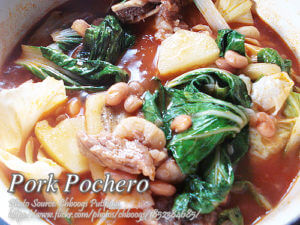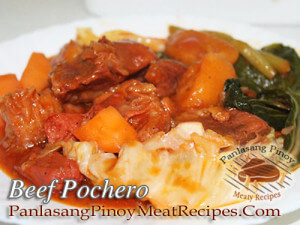Arroz a la Cubana is a Spanish dish consisting of white rice, fried egg, fried bananas and tomato sauce and does not include meat. The Filipino version of arroz a la cubana is quite distinctive because it contains sauteed ground meat usually pork and beef. This is a really nice and complete meal which you can eat during breakfast which is a bit heavy and also you can eat it for lunch or dinner. You can use plantain or saba bananas, but I think saba is more preferable.
Arroz a la Cubana: A Comfort Meal from My Uncle Lito’s Kitchen
Growing up in Bicol, weekend breakfasts at Uncle Lito’s house were something to look forward to. The smell of garlic sizzling in hot oil would hit you even before you stepped onto the porch. One of the dishes he made that left a permanent mark on my memory was the Filipino-style arroz a la cubana. It wasn’t fancy, but it had everything I needed on a plate: savory meat, perfectly cooked white rice, sweet fried saba, and a golden fried egg that oozed yolk over everything.
What Makes Filipino Arroz a la Cubana Special
While the original Spanish version of this meal is meatless—just white rice, tomato sauce, a fried egg, and banana—the Filipino version is more robust. It’s hearty, packed with savory ground pork and beef sautéed with onions, garlic, and tomatoes. There’s often a sprinkle of raisins for a sweet contrast, and saba bananas on the side make it unmistakably Filipino. It’s not just a dish; it’s a full experience.
My cousin Joy learned to make this dish while she was living in Manila for college. With a tight budget and minimal kitchen gear in her dorm, she turned to this one-pan wonder. It was cheap, satisfying, and easy to cook in batches. She even told me she used to make a big pot of the meat mixture and just fry up the egg and bananas fresh every morning. Genius, right?
How to Build That Perfect Bite
The magic of arroz a la cubana lies in the balance of flavors and textures. Each component has its role. The garlicky ground meat brings depth and umami. The rice acts as the neutral bed to soak up all the flavors. The fried egg gives it creaminess, and the saba banana adds a sweet counterpoint that ties it all together.
A good tip I got from Auntie Lorna was to use equal parts ground beef and pork. She said the beef gives you that rich flavor, while the pork keeps the mixture juicy. If you cook the meat too fast on high heat, it can get tough and crumbly. So she always sautéed on medium heat, patiently letting the meat soak up all the tomato and onion flavor. She also used fresh tomatoes instead of canned sauce, which made a huge difference in taste.
Simple Steps for Cooking Arroz a la Cubana
Start with sautéing the aromatics—garlic, onions, and tomatoes—until they release their fragrance and soften. This forms the flavorful base of the dish. Then add the ground meats, letting them brown and cook through. Once that’s done, season with salt, pepper, and a handful of raisins if you like a touch of sweetness. Let the mixture simmer a bit until everything comes together.
In another pan, fry some saba bananas until golden brown and crispy on the edges. If you can’t find saba, plantains are a good substitute, but they don’t have quite the same bite. Fry an egg until the edges are lacy and the yolk is still soft—that runny yolk is key.
To serve, mold your rice into a neat circle on the plate. Spoon the ground meat in the center. Add a couple of banana slices, maybe a wedge of sweet potato if you’re feeling fancy, and top it all off with your fried egg.
A Little Food for Thought
Arroz a la cubana may have Spanish roots, but its Filipino adaptation tells a story of practicality and comfort. The dish likely evolved during the colonial period, and Filipinos made it their own by adapting the ingredients to what’s locally available and affordable. It’s the kind of food that bridges cultures but still tastes like home.
It’s also a reflection of how Filipinos love to play with sweet and savory in the same bite. Just like tocino with garlic rice or longganisa dipped in vinegar, this dish is another proof that balance is at the heart of Filipino cooking.
The Perfect All-Day Meal
What I love most about arroz a la cubana is its flexibility. You can eat it for breakfast, lunch, or dinner. It’s quick enough to cook on a weekday, but filling enough to fuel you through long hours. I still make it the way Uncle Lito did, usually on quiet Sundays when I need a little comfort from the past.
And every time I do, the smell brings me back to those mornings in Bicol, with the radio playing old ballads, and Uncle Lito humming along in the kitchen, serving up plates that warmed both the belly and the heart.
How to Cook Arroz a la Cubana
Ingredients
- 1/4 kilo ground pork
- 1/4 kilo ground beef
- 2 tbsp. cooking oil
- 1 tbsp. garlic minced
- 1 tbsp. small onion sliced thinly
- 1 pc large tomato sliced
- 1/4 cup raisins
- 1/4 tsp. ground pepper
- 1 tsp. salt
- 6 cups newly cooked rice molded using the cups
- 1 pc fried saba banana sliced crosswise
- 1/2 cup boiled sweet potatoes peeled and cut into cubes
- 1 fried egg sunny side up
Instructions
How to Cook Arroz ala Cubana:
- Sauté the garlic, sliced tomato and onions in oil.
- Then add the ground beef and pork until slightly brown and cooked.
- Add the other ingredients, raisins, pepper and salt.
- In a plate arrange the molded rice in a circular fashion and put the cooked meat in the center.
- Garnish with bananas, sweet potatoes and fried egg on top. Serve hot.
Notes
Cooking Tips:
Use a Mix of Ground Pork and Beef for Better Flavor
Combining pork and beef gives the dish a richer, more balanced taste—beef adds depth while pork keeps the mixture moist and juicy. Cooking them together also helps create a natural oil base that enhances the sautéed garlic, onions, and tomatoes. Make sure not to overcook the meat so it stays tender and flavorful.Sauté Aromatics Slowly to Build a Flavorful Base
Take your time when cooking the garlic, onions, and tomatoes—this step sets the tone for the entire dish. Let the tomatoes break down fully until they become a thick, savory sauce. Rushing this part can lead to a bland meat mixture that misses the dish’s signature warmth and depth.Fry the Saba Bananas Until Caramelized, Not Just Cooked
Fried saba should be golden with slightly crisp edges and a caramelized surface that brings out their natural sweetness. This sweetness balances the savory meat and ties the dish together. Avoid overcrowding the pan, so each slice cooks evenly and doesn’t turn soggy.





